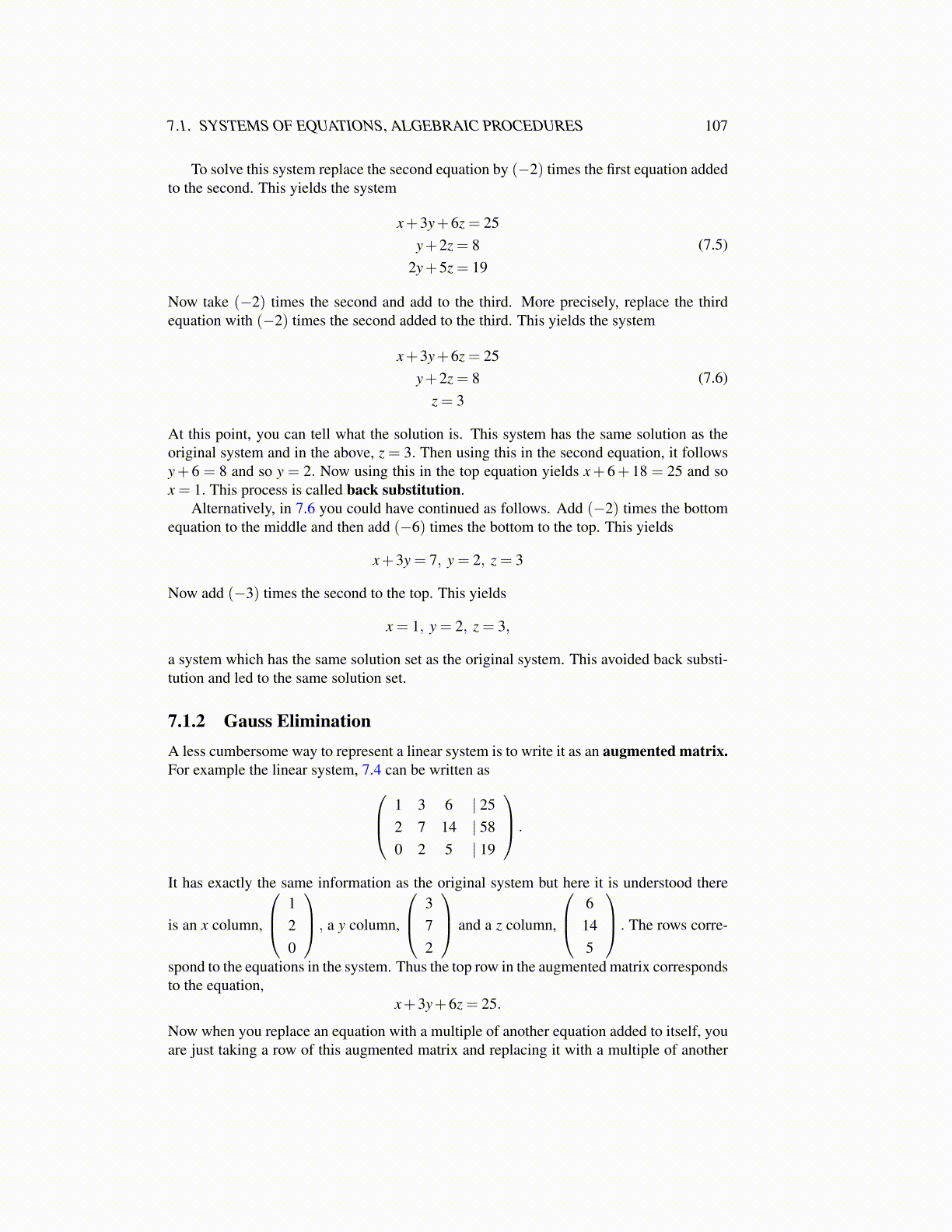
7.1. SYSTEMS OF EQUATIONS, ALGEBRAIC PROCEDURES 107
To solve this system replace the second equation by (−2) times the first equation addedto the second. This yields the system
x+3y+6z = 25y+2z = 8
2y+5z = 19(7.5)
Now take (−2) times the second and add to the third. More precisely, replace the thirdequation with (−2) times the second added to the third. This yields the system
x+3y+6z = 25y+2z = 8
z = 3(7.6)
At this point, you can tell what the solution is. This system has the same solution as theoriginal system and in the above, z = 3. Then using this in the second equation, it followsy+ 6 = 8 and so y = 2. Now using this in the top equation yields x+ 6+ 18 = 25 and sox = 1. This process is called back substitution.
Alternatively, in 7.6 you could have continued as follows. Add (−2) times the bottomequation to the middle and then add (−6) times the bottom to the top. This yields
x+3y = 7, y = 2, z = 3
Now add (−3) times the second to the top. This yields
x = 1, y = 2, z = 3,
a system which has the same solution set as the original system. This avoided back substi-tution and led to the same solution set.
7.1.2 Gauss EliminationA less cumbersome way to represent a linear system is to write it as an augmented matrix.For example the linear system, 7.4 can be written as 1 3 6 | 25
2 7 14 | 580 2 5 | 19
.
It has exactly the same information as the original system but here it is understood there
is an x column,
120
, a y column,
372
and a z column,
6145
. The rows corre-
spond to the equations in the system. Thus the top row in the augmented matrix correspondsto the equation,
x+3y+6z = 25.
Now when you replace an equation with a multiple of another equation added to itself, youare just taking a row of this augmented matrix and replacing it with a multiple of another